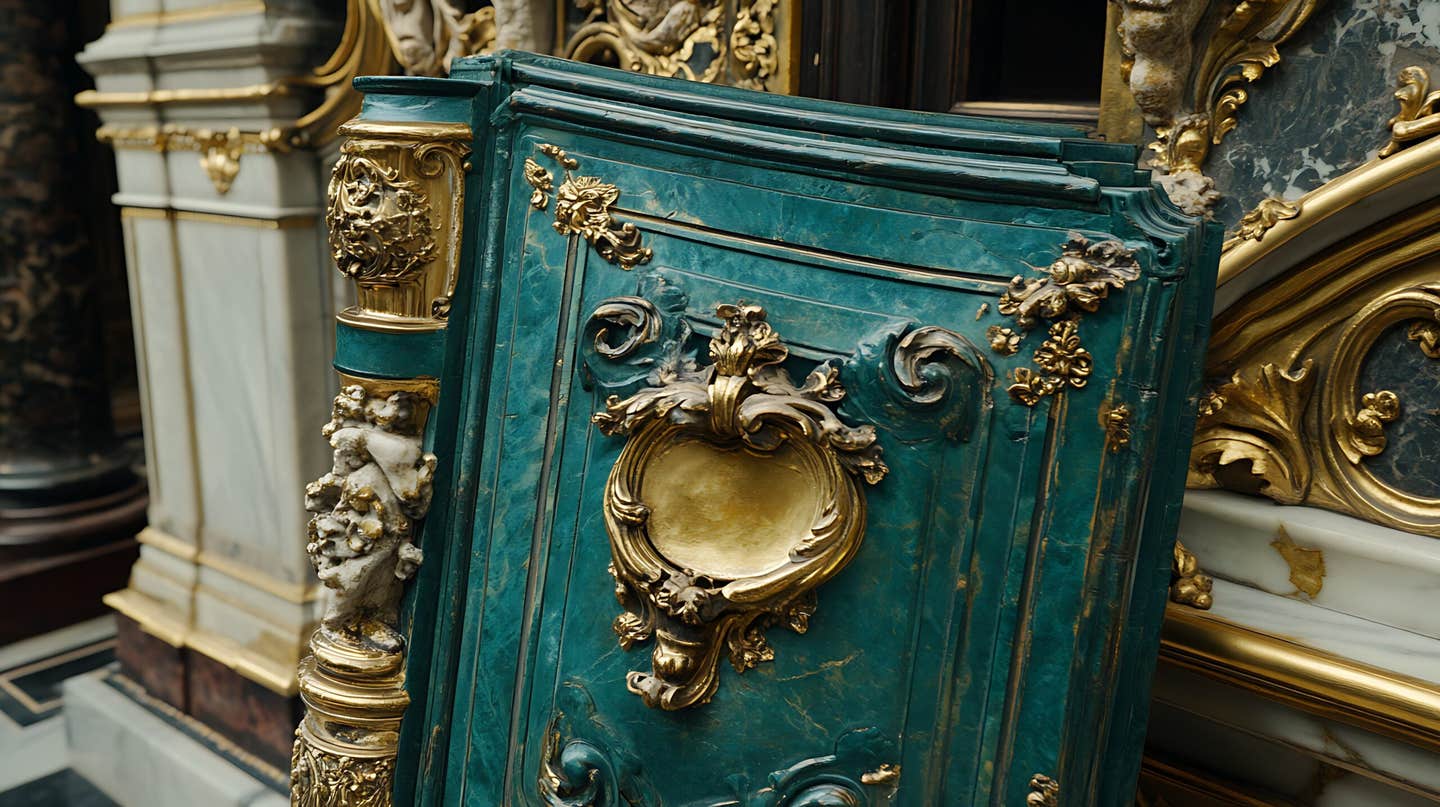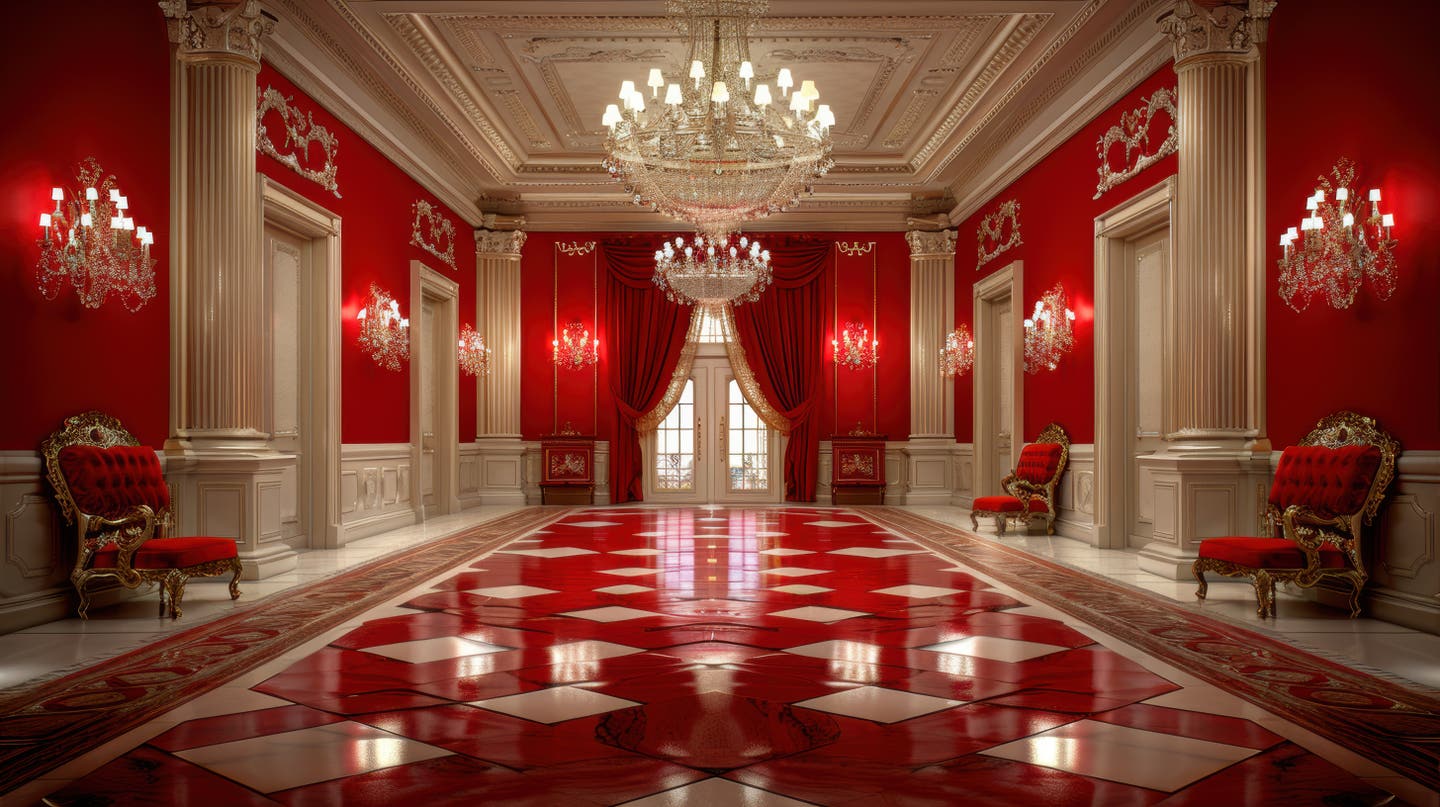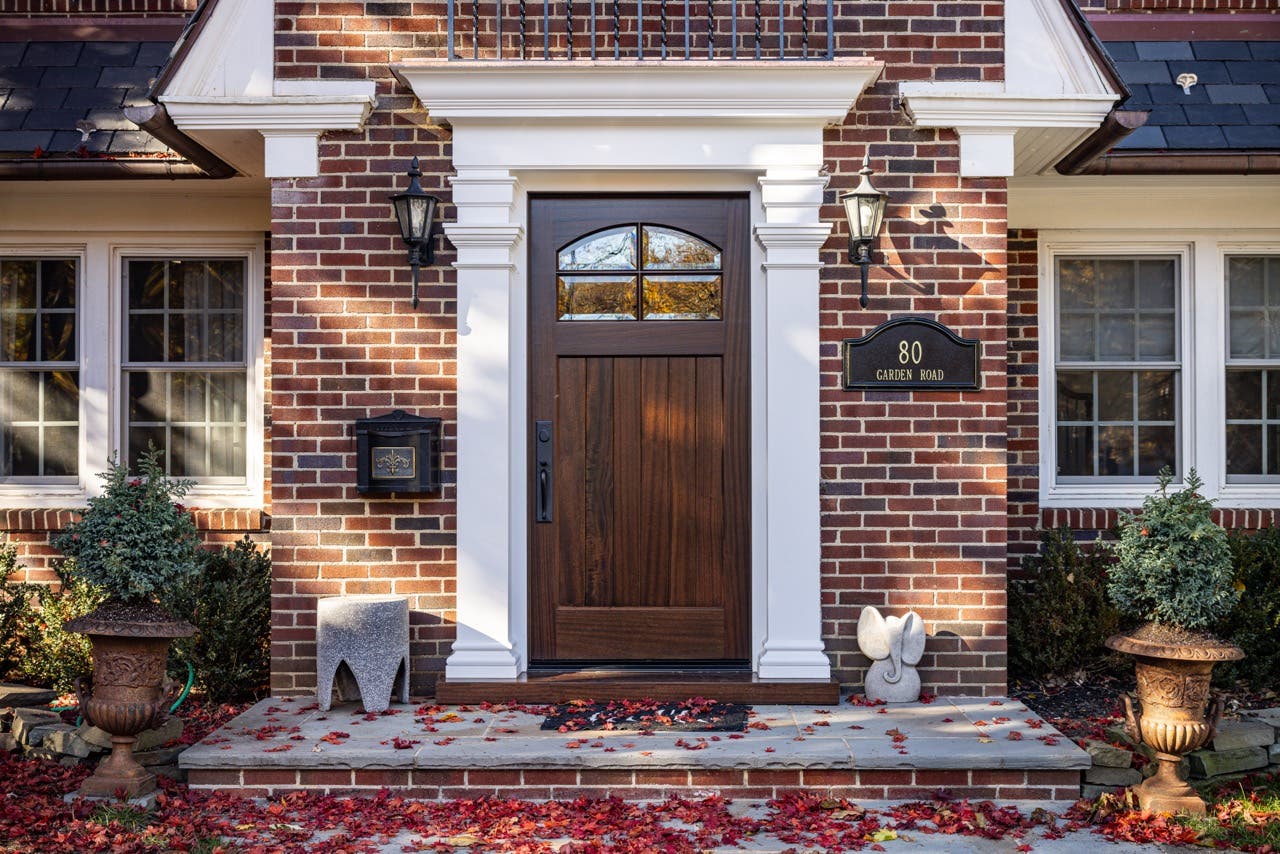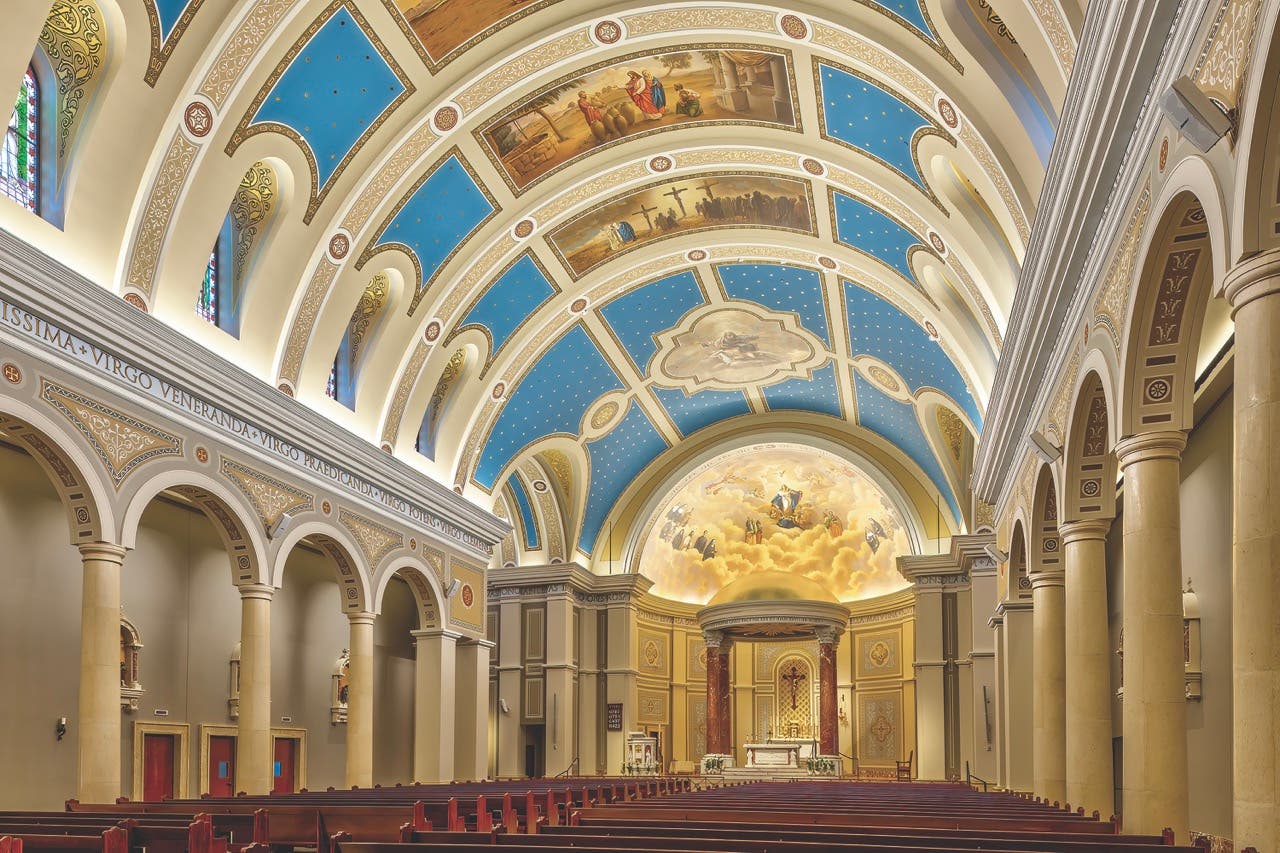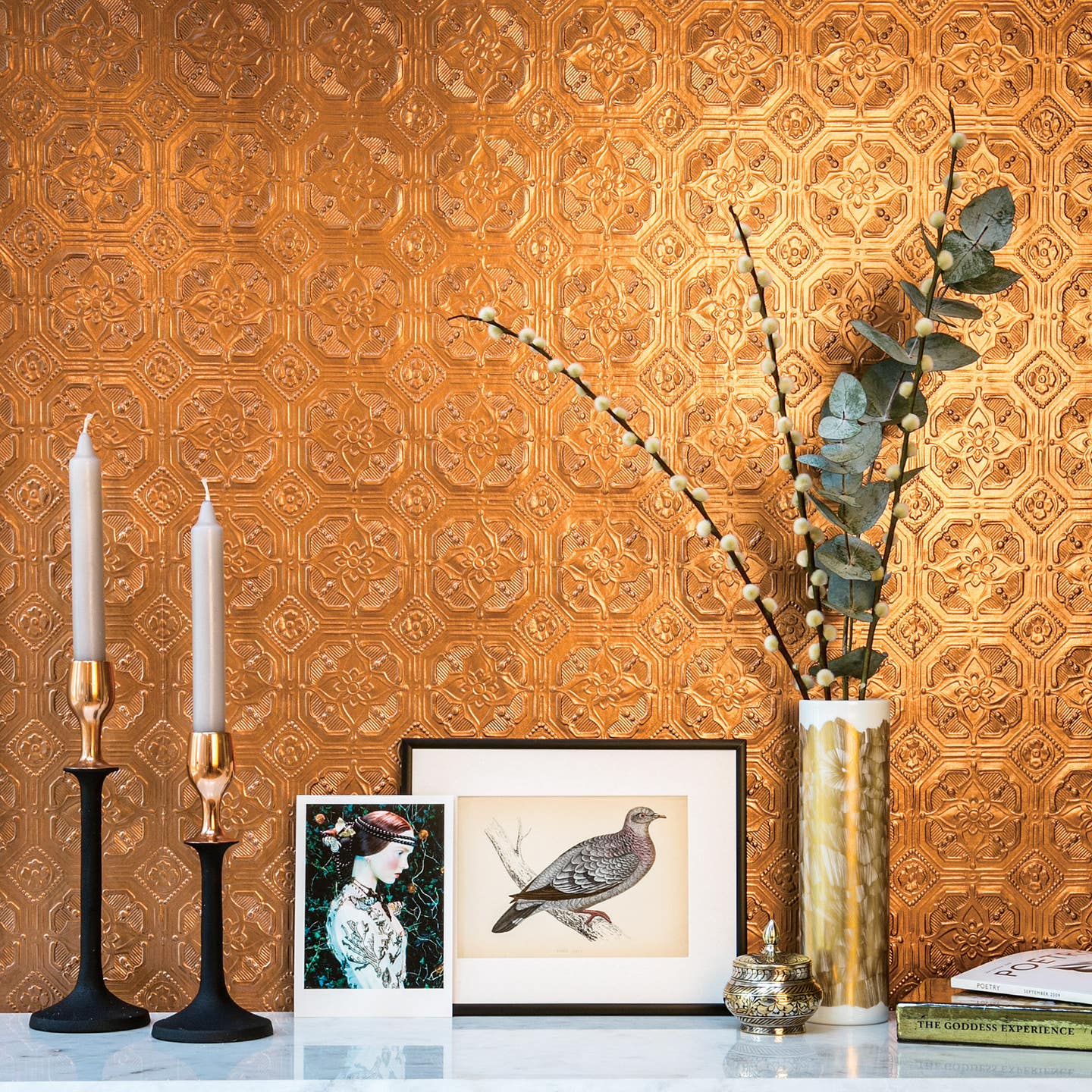
Product Reports
Decorative Wallpaper
Traditional wallpaper is just that—paper on which a pattern is imprinted, which is affixed to the wall. The contents of the paper change, the pigments and the methods of transferring them to the paper change—even the methods of hanging the paper change—but the net effect is a patterned wall. Wallpaper is part of the story of a building and the people who lived in or used the building, giving historical information about the aesthetics, perhaps the nature of the wallpaper’s production, the occupant’s taste, or social position. Wallpaper removed from its location loses its purpose and relative history, and the space itself loses part of its identity.
History
Initially, wallpaper was stenciled, or block printed, on sheets which were then affixed in horizontal rows. In the mid-15th century, rolls were developed, and paper was hung vertically. In the mid-17th century, matching continuous patterns were produced using distemper paints and block printing. Flocked wallpaper was introduced by applying an adhesive varnish, to which fine particles of silk or wool were applied to make a textural pattern. A wallpaper printing press was developed in 1785, and wallpaper began to be used in America.
Until 1820 to 1830, most papers were imported from France or England, since early American-produced wallpaper was crudely manufactured. Mid-19th century, four-color, then eight-color, and 20-color processes were developed, followed by the invention of intaglio and machine printing. The late 19th century saw the invention of premixed wallpaper paste, and the invention of Lincrusta-Walton bas-relief wallpaper, followed by Japanese leather paper and then Anaglypta wallpaper.
Post World War II, silk screening was used. Each of these types of wallpaper has specific identifiers to determine the date of their production; the Frangiamore document cited in the bibliography has excellent descriptions of examples to assist the homeowner in determining the date and production of wallpaper.
Use
Wallpapers provided a less-expensive alternative to fresco painting or expensive tapestries, while still showing a richness of decoration. They also had the ability to cover any imperfections in the substrate, such as cracks. Original Chinese landscapes were very expensive, due to their hand-painted production. Over time, mass-produced papers became affordable due to the development of less-expensive wood pulp papers.
Strengths and weaknesses
Depending on its production and the conditions under which it was kept, a wallpaper can be very durable, or can yellow due to the use of acidic wood fibers. Wallpaper is very susceptible to hand soiling, moisture, and ultra-violet light.
Deterioration mechanisms
There are many causes of deterioration of wallpaper. Commonly, hand soiling, dust accumulation and abrasion-through-use will mar certain areas more than others. Ultraviolet light can fade the original colors and yellow the substrate paper. Changes in moisture level can weaken the glue and cause adhesive breakdown. Dampness can cause moisture staining and mildew, and support silverfish, which will consume the paper itself. The substrate can become unstable and crack. Papers made from higher amounts of wood pulp can lead to brittle paper and discoloration. Damage to the paper by any cause can result in the loss of an area of pattern. The adhesion of the ink to the paper can fail, resulting in pigment flaking. Lastly, inappropriate repairs, such as scotch tape, rubber cement, varnishes, and fixatives, can further stain and damage the paper.
Preservation practices
Research the building to see if it contained wallpaper. Document any wallpaper discovered prior to any work being undertaken. Photograph the walls in both color and black and white. Use a mylar film overlay to trace the pattern to ensure an exact match to the original pattern.
Where wallpaper is missing, look in crevices to find evidence of wallpaper:
behind light sconce bases, light switch covers, radiators, skirting boards, wainscot, and later partitions (Figure 1). Wallpaper can have remains on summer fireplace boards which were stored and forgotten, or remnants may be left in attics and under stairs, inside wardrobes, drawer linings, and hat boxes known to have belonged to the occupants (Figure 2).
Use raking light to look at painted walls to detect seams telegraphing through paint, or the raised edges of overlapped sheets of early wallpaper. If the wall has been stripped to bare plaster, evidence of previously existing wallpaper may be detected by ultraviolet light showing residual glue patterns.
Ideally, the existing wallpaper should be preserved in-situ. While this isn’t always possible, it can frequently be the least-expensive option.
If it is not possible to preserve the paper in-situ, when removing the wallpaper, use a large pan steamer, which will loosen the adhesive and permit its successful removal. Remove paper in the largest strips possible. Examine the edges and back for maker’s marks, which can assist in dating the paper and locating replacements. If there are multiple layers, each layer can be separated later by placing them on a horizontal surface and then separating using steam along the edges.
Alternatively, a sandwich of wallpapers can be separated by submersing them in a tray of water. As they separate, place a screen between them to support the layers and prevent tearing. This permits all the layers to be understood in order. It should be noted that the bath method will result in more color loss than steaming. Once the layers are free from each other, dry the paper on glass or wax paper; newspaper or toweling may result in adhesion of the residual wallpaper paste to the drying surface. These salvaged pieces of wallpaper should be preserved on site between two pieces of mylar, permitting its protection while leaving it visible for research purposes and examination for reproduction. Do not roll the wallpaper, as this could cause further dislodging of the paint (Figure 3).
Repairs
Some maintenance can be done by a layperson. If the paper is just extremely dusty with loose dirt, it can be vacuumed through a nylon mesh screening placed flush against the paper. This will remove most of the dirt without damage to the paper. Certain types of soiling can be removed with a draftsman’s vinyl eraser, using a soft brush to remove the eraser shavings generated. Only pure wallpaper paste should be used to re-adhere paper to the wall.
Many repairs are only suitable to be undertaken by a paper conservator. One such treatment is the use of funori, a Japanese seaweed cooked into a gelatinous water-based material that can be used for a variety of repairs, such as water damage and adhesion of paints and substrates, leaving no thickness added and a matte finish.
If dampness caused the damage to the paper, the wallpaper can be carefully removed to repair the substrate. Clean the wall surface thoroughly before reattaching the wallpaper. If the paper is in good condition, it can be reattached using a first-quality water-soluble wallpaper paste. Paper which has only partially lifted from the substrate can be reattached using best-quality pure wallpaper paste or stabilized using thin brads affixed into the wall through acid-neutral acrylic disks that have been carefully sanded to remove all sharp edges. The reattached paper can be protected by sheets of plexiglass to shield it from ultraviolet light. Plexiglass needs to be held off the wall by at least ¼ inch to permit the air to continue to circulate over the face of the paper (Figure 4).
If the paper is delicate or weakened, it first should be mounted on lining paper prior to its installation with the above-mentioned paste. While this is an expensive process, it could be appropriate for valuable wallpapers with historical significance.
Where water staining is present on papers that have little wood pulp in them, a combination of blotting paper, a specialized solution suitable to the substrate, and cotton swabs can be used to daub the solution onto the paper which is made to sink into the blotter by tamping. Due to cost, this method is only appropriate for extremely valuable wallpaper, and then, only executed by a skilled restoration paper conservator.
Early wallpapers which were printed with distemper paints can flake off due to a weak bond with the paper. Varnish, shellac, or spray fixative will not repair this problem, and will further complicate the repair. For extremely valuable wallpaper, a funori adhesive can be painstakingly applied, almost flake by flake, by a qualified conservator. If this is too costly in the short term, the wallpaper may be encapsulated with drywall to protect it until such time as funds are available for its restoration.
When patterns have been lost, they can be repaired through a craftsman in-painting with watercolor or gouache on the exposed plaster to make up the absent detail. This should be carefully copied from another area of pattern extant.
A last resort is to reproduce the wallpaper. It requires the salvaging of a full-sized repeat of the pattern off the wall, to be sent to the manufacturer. It is important that the colors, textures, gloss, and additives such as mica be accurately reproduced, along with the method of paint or ink application. If the wallpaper on site is faded, there are many repositories of historic wallpaper which can be consulted for achieving the correct colors and sheens. If the wallpaper manufacturer is still available, such as Liberty prints, or patterns by William Morris, it is possible to get it fully reproduced with the same process (Figure 5). Laser-printing a replacement is also an option, but its final appearance will be distinguishable from original wallpapers due to its smooth appearance, with no indication of the pigment application process (Figure 6).
Cautions
If repairs are required, it is best to consult a paper conservator familiar with the type of wallpaper(s) found. Well-meaning but unprofessional repairs can frequently cause more harm than good. Scotch tape leaves residues that turn the paper yellow or leaves sticky residue. Inappropriate glues will cause staining of the paper in the localized areas of its application. Do not use shellac or spray fixative to stabilize flaking paint. It will change the matte finish to gloss; it could discolor the wallpaper; and make professional repairs more difficult or impossible.
Some 19th-century wallpapers with bright green pigments may contain arsenic. This can be determined with a hand-held x-ray fluorescence scanner.
Bibliography:
Images of wallpaper styles over time: https://www.huffpost.com/entry/wallpaper-history_n_6465970
National Park Service: Wallpaper Within A Restoration Project, April 2007.
Frangiamore, Catherine Lynn, Wallpapers in Historic Preservation, Office of Archaeology and Historic Preservation, National Park Service, US Department of the Interior 1977
Jillian Harrold and Zofia Wyszomirska-Noga, ‘Funori: The use of a traditional Japanese adhesive in the preservation and conservation treatment of Western objects’ in Adapt & Evolve 2015: East Asian Materials and Techniques in Western Conservation. Proceedings from the International Conference of the Icon Book & Paper Group, London 8-10 April 2015 (London, The Institute of Conservation: 2017), 69–79.
Paper, Pins, and Preservation: The Evolution of Wallpaper Conservation in a “Ruin” Environment, STEPHANIE M. HOAGLAND Principal, Jablonski Building Conservation, Inc. The Book and Paper Group Annual 34 (2015)
Susan D. Turner is a Canadian architect specializing in historic preservation of national registered buildings. She is the Senior Technical Architect for JLK, a woman-owned business specializing in the repair and preservation of historic buildings. She can be reached at sturner@jlkarch.com



